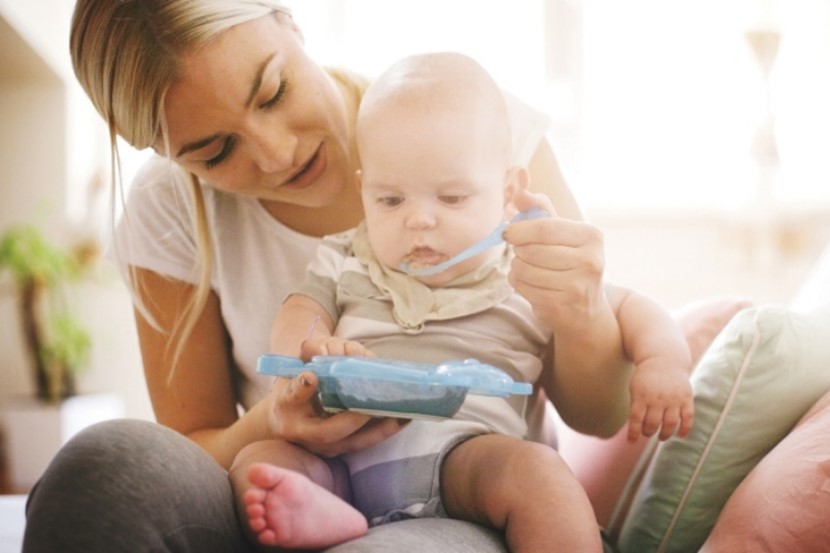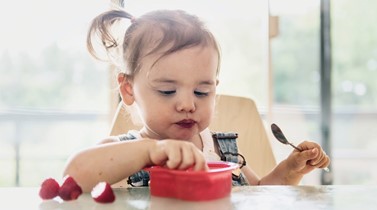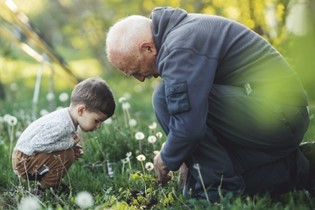Smoothly does it: starting your baby on solids

When and how to start solids has been hotly contested over the years. Hannah Gentile gets back to the facts and shares tips for making the transition a smooth one.
Introducing solid foods is probably one of the most heavily discussed areas of childhood nutrition. More specifically, when to introduce, what to introduce and how to introduce. Part of the controversy hits on a growing challenge in modern parenting – the tension between listening to our family and the medical establishment (traditional sources of parenting wisdom) and listening to online information (a new and varied source of support and seemingly up-to-date information). Whilst the internet has brought amazing benefits, it has also opened up parenting to the views of any person, regardless of their qualifications. It has enabled internet personalities to make money and increase their popularity, capitalising on the fears of parents.
To wait, or not to wait
In the ‘60s, ‘70s and ‘80s, solids were started as soon as baby was deemed ready. I happened to come across my baby book the other day, where the visiting nurse had suggested my mother start me on solids around three months old. Juice had also been suggested even earlier to help with constipation.
However, as we entered the ‘90s, infant nutrition started to get a boost from the burgeoning research industry. Still pre-internet era, studies were pointing to starting solids later. This was directed by child development work, looking at when a child is physically ready for solids. The ‘90s focussed primarily on the first area of introducing solids – timing. The main reasons behind delaying until a child was six months old were:
☙ The digestive system is not mature enough to handle the amounts and types of fat, protein and starch found in solid foods until roughly six months.
☙ The immune system is not robust enough to take on the bacteria found in food and the decrease in breastfeeding (which provides immune system protection).
☙ The kidneys are not mature enough to take on the additional nutrients in foods. Combined with gut immaturity, this can cause diarrhoea, leading to a slow growth rate.
☙ Safety can also be an issue, where children under the age of six months often do not have the head or neck control to be able to swallow solid foods.
☙ In addition to the above physical development issues, it’s also often the case that a baby’s choking reflex is still quite active. This means that they will tend to spit food out and not swallow any of the food offered.
Opposition to this rests on research which suggests that children who are introduced to food prior to six months have lower rates of allergies and intolerances. The hypothesis for this is that the immune system is not mature enough to mount a response to the potential allergen and, as such, becomes accustomed to the food and can tolerate it. It’s worth discussing this with your GP if you’re concerned. However, I have put together some handy tips in this article for indications of when your child is showing signs of being ready to start solids.
The great debate
By the 2000s the discussion had changed to what we were feeding our children. Obesity and food allergies began to dominate the conversation. News articles were more readily available, and support groups, mummy blogs and parenting networks appeared almost overnight. Suddenly parents needed PhDs to decipher the information available to them. Was the evidence coming from a reputable journal? Was the sample size big enough and what were the confounding variables? Who funded this study? The main arguments for best first foods centred on the growing fear of sugar, also known as carbohydrates. While we definitely need to avoid food with added sugars, it’s worth noting that sugar is macronutrient, just like protein and fat. It is found in a variety of foods, including fruit, vegetables and grains. Carbohydrates are arguably the most nutrient-dense of the food groups, full of vitamins and minerals, many of which are essential for brain growth. Sugar is readily digested by the body and used to produce energy. If we have sugar in excess, however, it is converted to fat and stored.
How to start solids became the final link in the debate around the end of the 2000s. Baby-led weaning, championed by Gill Rapley, surged in popularity as more parents started to understand the benefits of letting kids explore taste and texture for themselves from a young age.
|
FORBIDDEN TREATS
|
HANNAH'S GUIDELINES
1. Give your baby their first taste of solids when it is right for them.
Not when it was right for you, or your family, or your friend’s baby, or your ever-so-helpful next-door-neighbour’s grandchild! Start when your baby is showing signs of being ready.
2. Ask yourself these questions before starting solids:
☙ Is my child older than four months?
☙ Is my child showing signs of being physically ready for solids? These include having good head and neck control, a less-active gag reflex and being able to sit mostly unaided.
☙ Is their growth and development still tracking well, or have they dropped more than two percentiles? If you find a child is dropping two or three percentiles – ie from the 50th to the 10th percentile on their height or weight chart – and this has been happening for more than one health visit, then it may be time to look at solids if, and only if, your child also meets the first two criteria on this list.
3. Start new foods before midday.
This way if the food were to upset baby’s tummy, you hopefully won’t be up all night!
4. Start new foods after baby first wakes up from a sleep.
Allergic reactions can happen within minutes and up to one to two hours after the food has been consumed (depending on severity). This means it is ideal to give baby a bit of time before going to bed so you can monitor any adverse reactions.
5. Start on vegetables and grains, rather than fruit.
Good old apple or pear has always been a go-to first food. The trouble is that emerging research is showing us that children whose first food is sweet tend to show a preference for sweet foods as they grow. Start instead with some brown baby rice cereal, ground oats or kumara. By all means introduce fruit too within the first three to four weeks. However, remember that baby’s body is a lot smaller than yours. The sugar in fruit releases gas as a by-product of its breakdown in the gut. This gas can cause tummy pain in infants. This isn’t a food reaction, this is a normal gut response which is equal to the amount of fruit fed. This is also why store-bought baby food pouches can be problematic. If you read the ingredient list, almost all contain at least one type of high-fructose fruit.

6. In those early months it is all about being relaxed around meal times.
Let baby get messy and have fun, and persevere with foods they do not like the first time. It is very normal for babies to screw up their faces in response to a new taste or texture – do not get this confused with disliking a food. Whether you start out with pureed foods, mashed foods, or soft finger foods is not going to make or break your child’s development. It really comes down to what works for your child and your family.
7. Whether you choose baby or parent-led weaning, you are doing the right thing.
Just make sure you support your child to progress to finger foods no later than nine to ten months old and nearly-full family meals by one year of age.
8. The food you give them as healthy and ‘everyday’ as possible.
Cook dinner as usual (without added salt) and then puree some of the main ingredients. It is ideal to keep the purees separate so that baby can taste all the different flavours. As baby reaches eight months old, start pureeing their food less and less. By 10 months of age, their food should be a soft whole version of your meal. By the time they’re one year old, your toddler should be able to eat most of the same meal as the rest of the family.
As you can see, there is no need for separate meals, supermarket canned baby food or a smorgasbord of options. Food can be easily adapted, allowing young children to experience a wide variety of tastes and textures. Have fun with family meals, relax, and keep it 90% healthy.
Hannah Gentile, of Nourished by Nature, is a registered nutritionist providing nutrition support and advice for conception, pregnancy, starting solids and fussy eating. Find her at nourishedbynature.co.nz. For more on starting solids, check out her new ebook which includes a day by day schedule of what foods to feed when.

AS FEATURED IN ISSUE 42 OF OHbaby! MAGAZINE. CHECK OUT OTHER ARTICLES IN THIS ISSUE BELOW

















